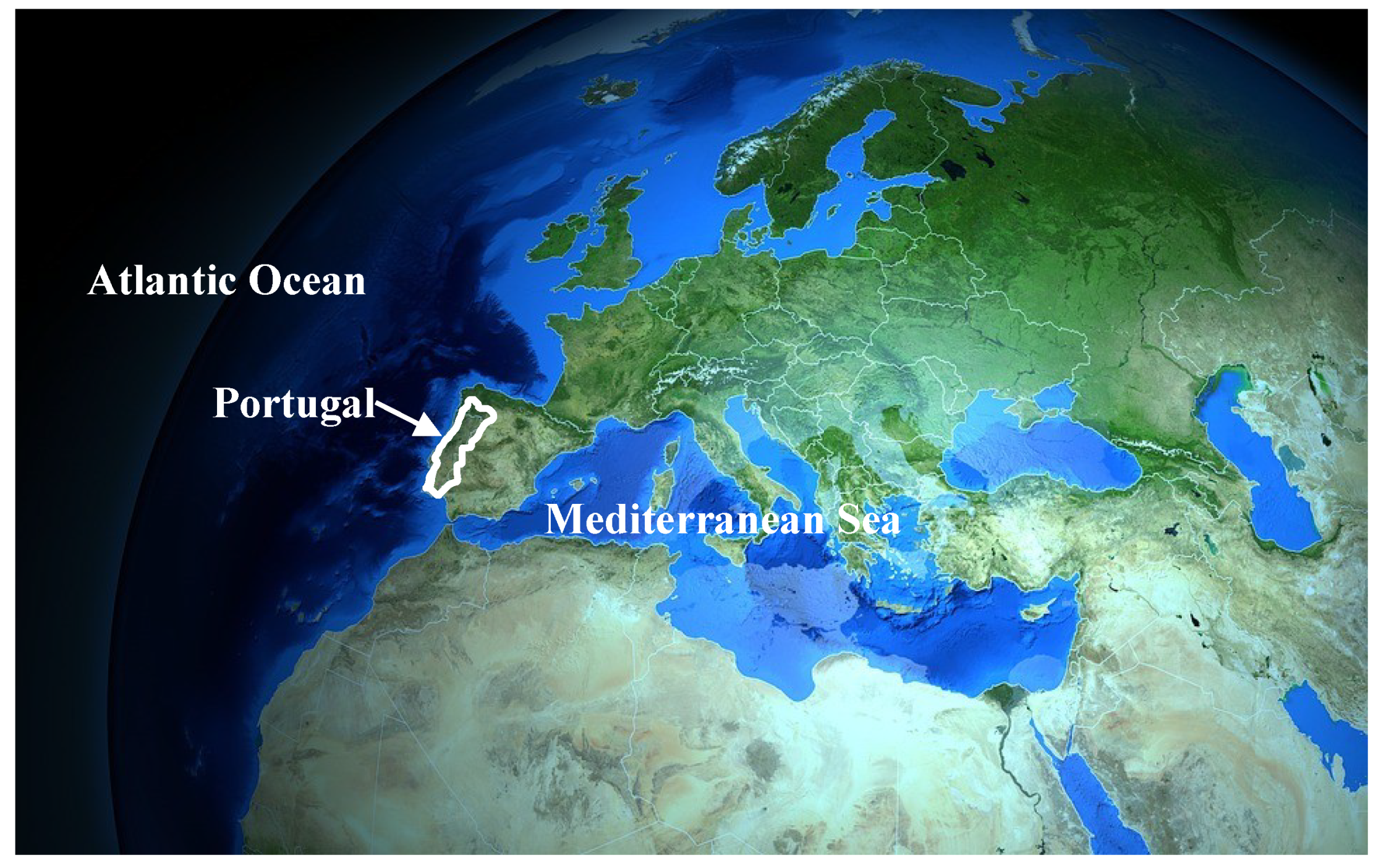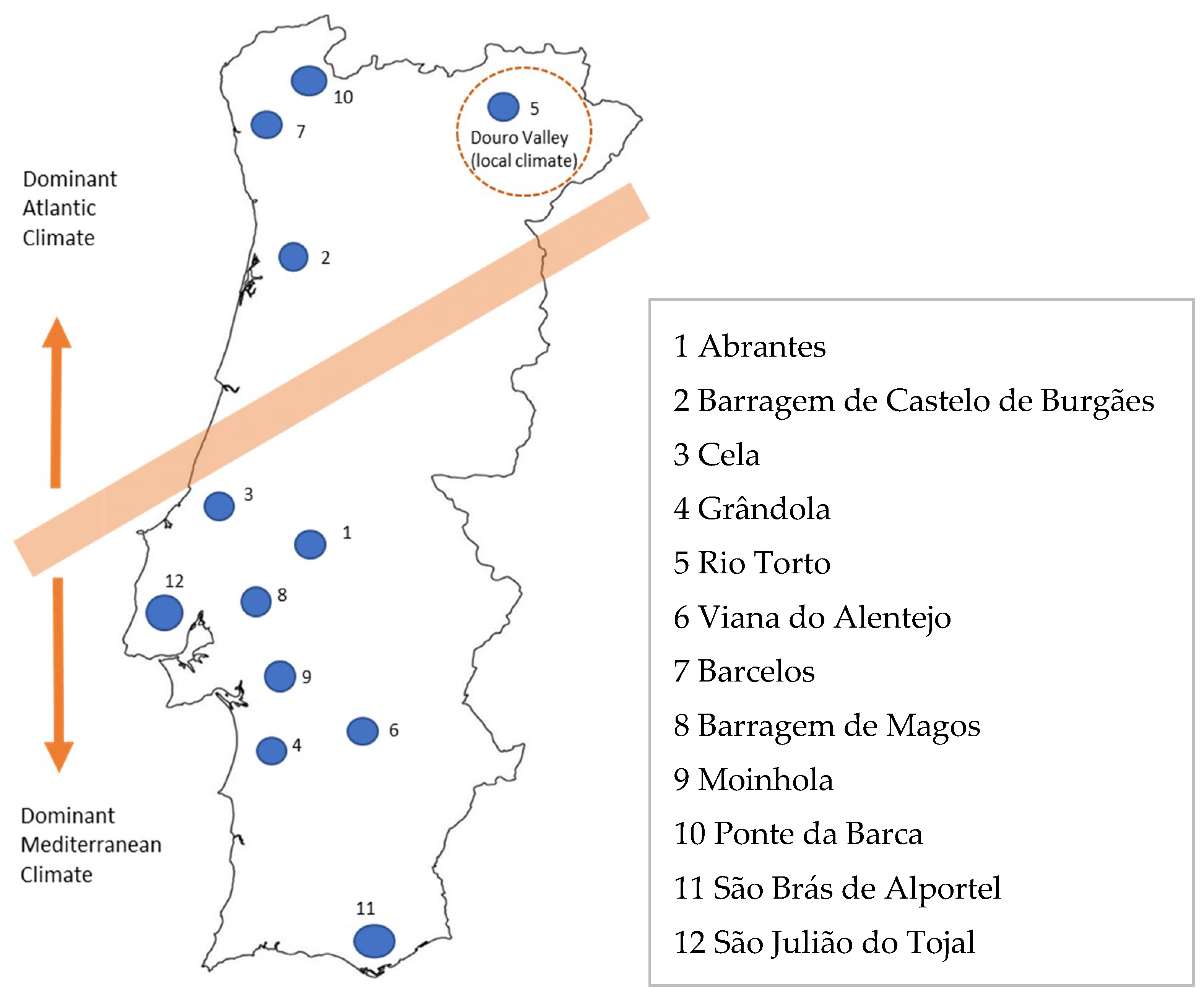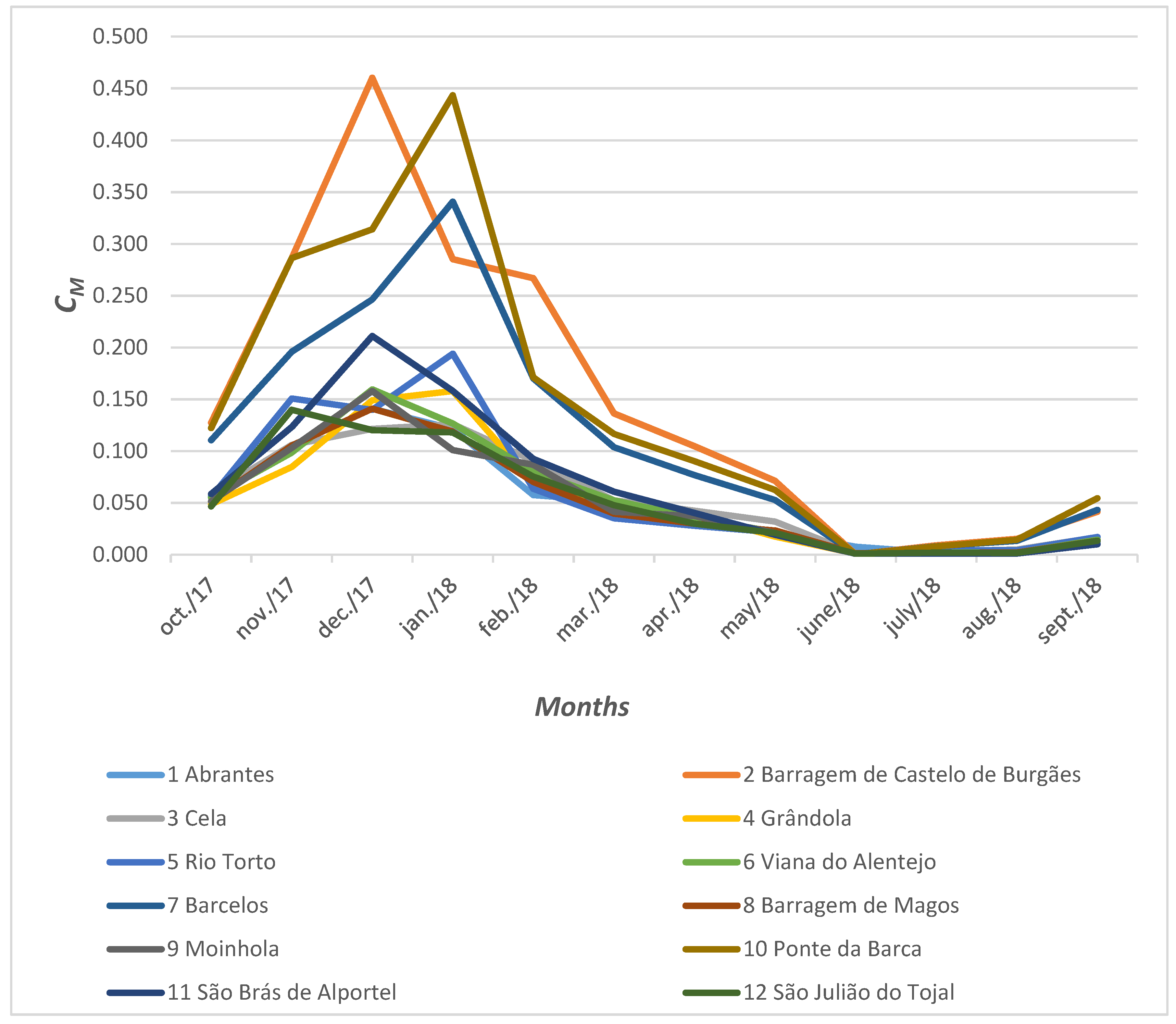Contributions of Water-Related Building Installations to Urban Strategies for Mitigation and Adaptation to Face Climate Change
Abstract
1. Introduction
2. Climate Change Impacts and Response Strategies in the Urban Environment
2.1. Impacts on Temperature and Precipitation
2.2. Mitigation Strategies
2.3. Processes of Adaptation and Increased Resilience
3. Methodology
4. Results and Discussion
5. Conclusions
Author Contributions
Funding
Conflicts of Interest
References
- United Nations. World Urbanization Prospects; The 2014 Revision (Highlights); United Nations—Department of Economic and Social Affairs: New York, NY, USA, 2014; ISBN 978-92-1-151517-6. [Google Scholar]
- Chalmers, P. Climate Change. Implications for Buildings. Key Findings from the Intergovernmental Panel on Climate Change, Fifth Assessment Report; European Climate Foundation, Building Performance Institute Europe, Global Buildings Performance Network, World Business Council for Sustainable Development, University of Cambridge’s Judge Business School, Institute for Sustainability Leadership; BPIE: Brussels, Belgium, 2014. [Google Scholar]
- Wilk, J.; Wittgren, H. Adapting Water Management to Climate Change; Swedish Water House Policy Brief 2009, Nr. 7; SIWI: Stockholm, Sweden, 2009. [Google Scholar]
- Haines, A.; Kovats, R.; Campbell-Lendrum, D.; Corvalan, C. Climate change and human health: Impacts, vulnerability and public health. Public Health 2006, 120, 585–596. [Google Scholar] [PubMed]
- Alberti, L.; Contone, M.; Loris, C.; Oberto, G.; La Licata, I. Assessment of aquifers groundwater storage for the mitigation of climate change effects. Rend. Online Soc. Geol. Ital. 2016, 39, 89–92. [Google Scholar] [CrossRef]
- Clarke, L.; Eom, J.; Marten, E.; Horowitz, R.; Kyle, P.; Link, R.; Mignone, B.; Mundra, A.; Zhou, Y. Effects of long-term climate change on global building energy expenditures. Energy Econ. 2018, 72, 667–677. [Google Scholar] [CrossRef]
- Ekström, M.; Fowler, H.; Kilsby, C.; Jones, P. New estimates of future changes in extreme rainfall across the UK using regional climate model integrations. 2. Future estimates and use in impact studies. J. Hydrol. 2005, 300, 234–251. [Google Scholar] [CrossRef]
- Trenberth, K. Changes in precipitation with climate change. Clim. Res. 2011, 47, 123–138. [Google Scholar] [CrossRef]
- AWWA. Climate Change and Water Resources: A Primer for Municipal Water Providers; AWWA Research Foundation, University Corporation for Atmospheric Research, American Water Works Association; IWA Publishing: Denver, CO, USA, 2006; 1P-5C-91120-05/06-NH. [Google Scholar]
- Giorgi, F.; Lionello, P. Climate change projections for the Mediterranean region. Glob. Planet. Chang. 2007, 63, 90–104. [Google Scholar] [CrossRef]
- Pausas, J.G. Changes in fire and climate in the Eastern Iberian Peninsula (Mediterranean Basin). Clim. Chang. 2004, 63, 337–350. [Google Scholar] [CrossRef]
- European Commission. COM 718 Communication from the Commission to the Council and the European Parliament on Thematic Strategy on the Urban Environment; Commission of the European Communities—SEC: Brussels, Belgium, 2006; p. 16. [Google Scholar]
- Magadza, C. Climate change impacts and human settlements in Africa: Prospects for adaptation. Environ. Monit. Assess. 2000, 61, 193–205. [Google Scholar] [CrossRef]
- World Health Organization. Summary and Policy Implications Vision 2013: The Resilience of Water Supply and Sanitation in the Face of Climate Change; WHO—Department for International Development: Geneva, Switzerland, 2009; ISBN 978-92-4-159842-2.
- Wilby, R. A review of climate change impacts on the built environment. Built Environ. J. 2007, 33, 31–45. [Google Scholar] [CrossRef]
- The Climate Change Clearinghouse: A Resource about Drinking Water, Wastewater, and Water Reuse. Changes in Precipitation. Available online: http://www.theclimatechangeclearinghouse.org/ClimateChangeImpacts/ChangesInPrecipitation/Pages/default.aspx (accessed on 20 October 2014).
- La Licata, I.; Colombo, L.; Francani, V.; Alberti, L. Hydrogeological study of the glacial—fluvioglacial territory of grandate (Como, Italy) and stochastical modeling of groundwater rising. Appl. Sci. 2018, 8, 1456. [Google Scholar] [CrossRef]
- Dean, J.; Sholley, M. Groundwater Basin Recovery in Urban Areas and Implications for Engineering Projects. Engineering Geology for Tomorrow’s Cities; IAEG: Dublin, Ireland, 2006. [Google Scholar]
- United Nations. Buildings and Climate Change: Summary for Decision-Makers; United Nations Environment Program: Paris, France, 2009; ISBN 987-92-807-3064-7. [Google Scholar]
- UNEP. Technologies for Climate Change Mitigation: Building Sector; UNEP Risø Centre on Energy, Climate and Sustainable Development: Copenhagen, Denmark, 2012; ISBN 978-87-92706-57-7. [Google Scholar]
- Silva-Afonso, A. The bathroom of the future: Its contribution to sustainability. In Proceedings of the International Symposium CIB W062 2014—Water Supply and Drainage for Buildings, Sao Paulo, Brazil, 8–10 September 2014. [Google Scholar]
- Neves, A. Energy and water efficiency in residential buildings: Two sides of the same coin? In Proceedings of the 7ªs Jornadas de Hidráulica, Recursos Hídricos e Ambiente, Porto, Portugal, 23 October 2012. [Google Scholar]
- Matos, C.; Briga-Sá, A.; Pereira, S.; Silva-Afonso, A. Water and energy consumption in urban and rural households. In Proceedings of the International Symposium CIB W062 2013—Water Supply and Drainage for Buildings, Nagano, Japan, 17–20 September 2013. [Google Scholar]
- Silva-Afonso, A.; Pimentel-Rodrigues, C. Water efficiency of products. The Portuguese system of certification and labeling. J. AWWA 2010, 102, 52–56. [Google Scholar]
- Silva-Afonso, A.; Pimentel-Rodrigues, C. Water-energy nexus. The outcome of the implementation of water efficiency measures in buildings. In Proceedings of the 7th IWA Specialist Conference on Efficient Use and Management of Water: Water Efficiency Strategies for Difficult Times, Paris, France, 22–25 October 2013. [Google Scholar]
- Silva-Afonso, A.; Rodrigues, F.; Pimentel-Rodrigues, C. Water efficiency in buildings: Assessment of its impact on energy efficiency and reducing GHG emissions, Recent Researches in Energy & Environment. In Proceedings of the 6th IASME/WSEAS International Conference on Energy & Environment—EE’11, Cambridge, UK, 23–25 February 2011; pp. 191–195. [Google Scholar]
- Kasmin, H.; Stovin, V.R.; Hathway, E.A. Towards a generic rainfall-runoff model for green roofs. Water Sci. Technol. 2010, 62, 898–905. [Google Scholar] [CrossRef] [PubMed]
- Kelly, D. Climate change, flooding, and the role of front gardens. In Proceedings of the International Symposium CIB W062 2014—Water Supply and Drainage for Buildings, Sao Paulo, Brazil, 8–10 September 2014. [Google Scholar]
- Stovin, V. The potential of green roofs to manage urban stormwater. Water Environ. J. 2010, 24, 192–199. [Google Scholar] [CrossRef]
- Yanling, L.; Babcock, R.W. Green roof hydrologic performance and modeling: A review. Water Sci. Technol. 2014, 69, 727–738. [Google Scholar]
- Sheng, L.; Mari, T.; Ariffin, A.; Hussein, H. Integrated sustainable roof design. Proc. Eng. 2011, 21, 846–852. [Google Scholar] [CrossRef][Green Version]
- Silva-Afonso, A.; Pimentel-Rodrigues, C.; Tadeu, A.; Almeida, R.; Simões, N. Rainwater harvesting in buildings with green roofs: Runoff coefficients. In Proceedings of the Anais do CIB W062 2016—Water Supply and Drainage for Buildings, Kosice, Slovakia, 29 August–1 September 2016. [Google Scholar]
- Breuning, J.; Yanders, A. Introduction to the FLL Guidelines for the Planning, Construction and Maintenance of Green Roofing; Green Roof Technology: Baltimore, MD, USA, 2012. [Google Scholar]
- ANQIP (Associação Nacional para a Qualidade nas Instalações Prediais). Technical Specification ETA 0701—Rainwater Harvesting Systems in Buildings (version 9); ANQIP: Aveiro, Portugal, 2015. [Google Scholar]
- Monteiro, C.; Calheiros, C.; Pimentel-Rodrigues, C.; Silva-Afonso, A.; Castro, P. Contributions to the design of rainwater harvesting systems in buildings with green roofs in a Mediterranean climate. Water Sci. Technol. 2016, 73, 1842–1847. [Google Scholar] [CrossRef] [PubMed]
- Chow, V. Handbook of Applied Hydrology; McGraw-Hill: New York, NY, USA, 1964. [Google Scholar]
- European Committee for Standardization. European Standard EN 16941-1—On-Site Non-Potable Water Systems—Part 1: Systems for the Use of Rainwater; CEN: Brussels, Belgium, 2018. [Google Scholar]
- Pimentel-Rodrigues, C.; Silva-Afonso, A. Adaptation measure to climate change. Integration of green roofs with rainwater harvesting systems. WSEAS Trans. Environ. Dev. 2018, 14, 53–61. [Google Scholar]
- Jack, L.; Kelly, D. The development of a methodological approach for the use of UK climate change data for the design of rainwater drainage systems for buildings. In Proceedings of the International Symposium CIB W062 2011—Water Supply and Drainage for Buildings, Aveiro, Portugal, 25–28 September 2011. [Google Scholar]
- Pimentel-Rodrigues, C.; Silva-Afonso, A.; Lima, M. Rainwater harvesting systems in buildings with green roofs: A study on runoff coefficients. In Proceedings of the Anais do CIB W062 2017—Water Supply and Drainage for Buildings, Haarlem, The Netherlands, 23–25 August 2017. [Google Scholar]





| Component of the Urban Water Cycle | Annual Energy Savings and CO2 Reductions with the Use of Water-Efficient Products | ||||
|---|---|---|---|---|---|
| Per Person (kWh) | Per Person (kg of CO2) | Per Family (kWh) | Per Family (kg of CO2) | Percentage of the Total (%) | |
| Building system (only sanitary hot water heating) | 368 | 99.0 | 846 | 228.4 | 87.0 |
| Public system of water supply | 32 | 8.6 | 74 | 19.9 | 13.0 |
| Public system of drainage and treatment of wastewater | 23 | 6.2 | 53 | 14.3 | |
| TOTAL | 423 | 113.8 | 973 | 262.6 | 100.0 |
| Type of Climate Change Impact. | Measures to be Adopted in Water-Related Installations to Promote an Increased Resilience of the Building | |
|---|---|---|
| New Buildings | Existing Buildings | |
| Increased heavy rainfall intensity | - Review design standards by integrating new weather data or higher safety coefficients; - Construct green roofs (preferably mandatory); - Install rainwater harvesting systems (preferably mandatory). | - Review rainwater drainage pipe sizing, especially stacks and drains (in gravity systems), and analyse the need for new emergency overflow outlets (specifically in siphon systems); - Install rainwater harvesting systems (if possible). |
| Extreme heat waves (water scarcity) | - Review design standards considering greater capacity in water tanks (when they exist in the building); - Install rainwater harvesting systems and/or greywater reuse systems; - Apply water-efficient products (preferably mandatory). | - Conduct water efficiency audits; - Install rainwater harvesting systems and/or greywater reuse systems (if possible); - Exchange installed devices for more efficient ones or apply flow or volume reducers. |
© 2019 by the authors. Licensee MDPI, Basel, Switzerland. This article is an open access article distributed under the terms and conditions of the Creative Commons Attribution (CC BY) license (http://creativecommons.org/licenses/by/4.0/).
Share and Cite
Pimentel-Rodrigues, C.; Silva-Afonso, A. Contributions of Water-Related Building Installations to Urban Strategies for Mitigation and Adaptation to Face Climate Change. Appl. Sci. 2019, 9, 3575. https://doi.org/10.3390/app9173575
Pimentel-Rodrigues C, Silva-Afonso A. Contributions of Water-Related Building Installations to Urban Strategies for Mitigation and Adaptation to Face Climate Change. Applied Sciences. 2019; 9(17):3575. https://doi.org/10.3390/app9173575
Chicago/Turabian StylePimentel-Rodrigues, Carla, and Armando Silva-Afonso. 2019. "Contributions of Water-Related Building Installations to Urban Strategies for Mitigation and Adaptation to Face Climate Change" Applied Sciences 9, no. 17: 3575. https://doi.org/10.3390/app9173575
APA StylePimentel-Rodrigues, C., & Silva-Afonso, A. (2019). Contributions of Water-Related Building Installations to Urban Strategies for Mitigation and Adaptation to Face Climate Change. Applied Sciences, 9(17), 3575. https://doi.org/10.3390/app9173575






